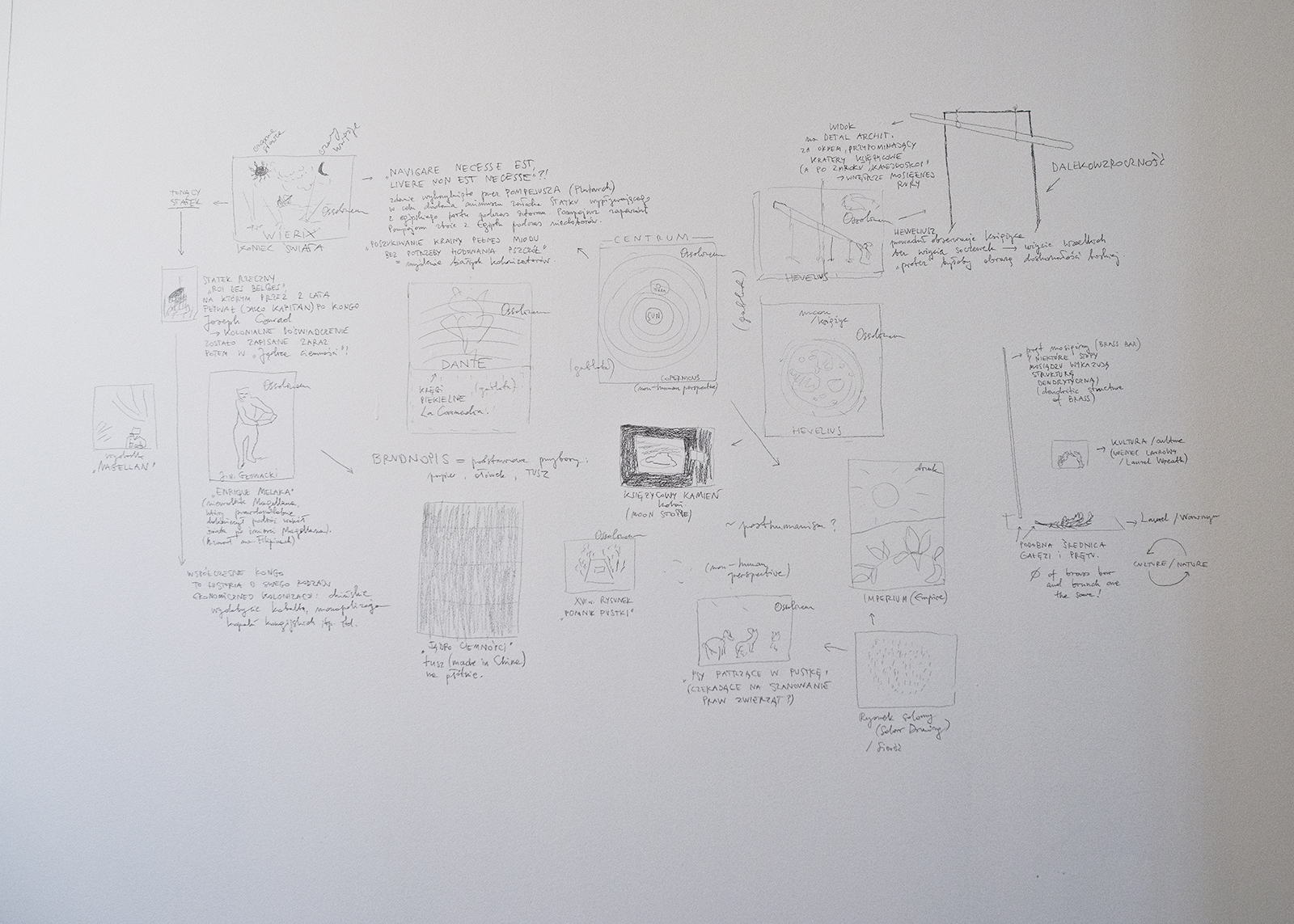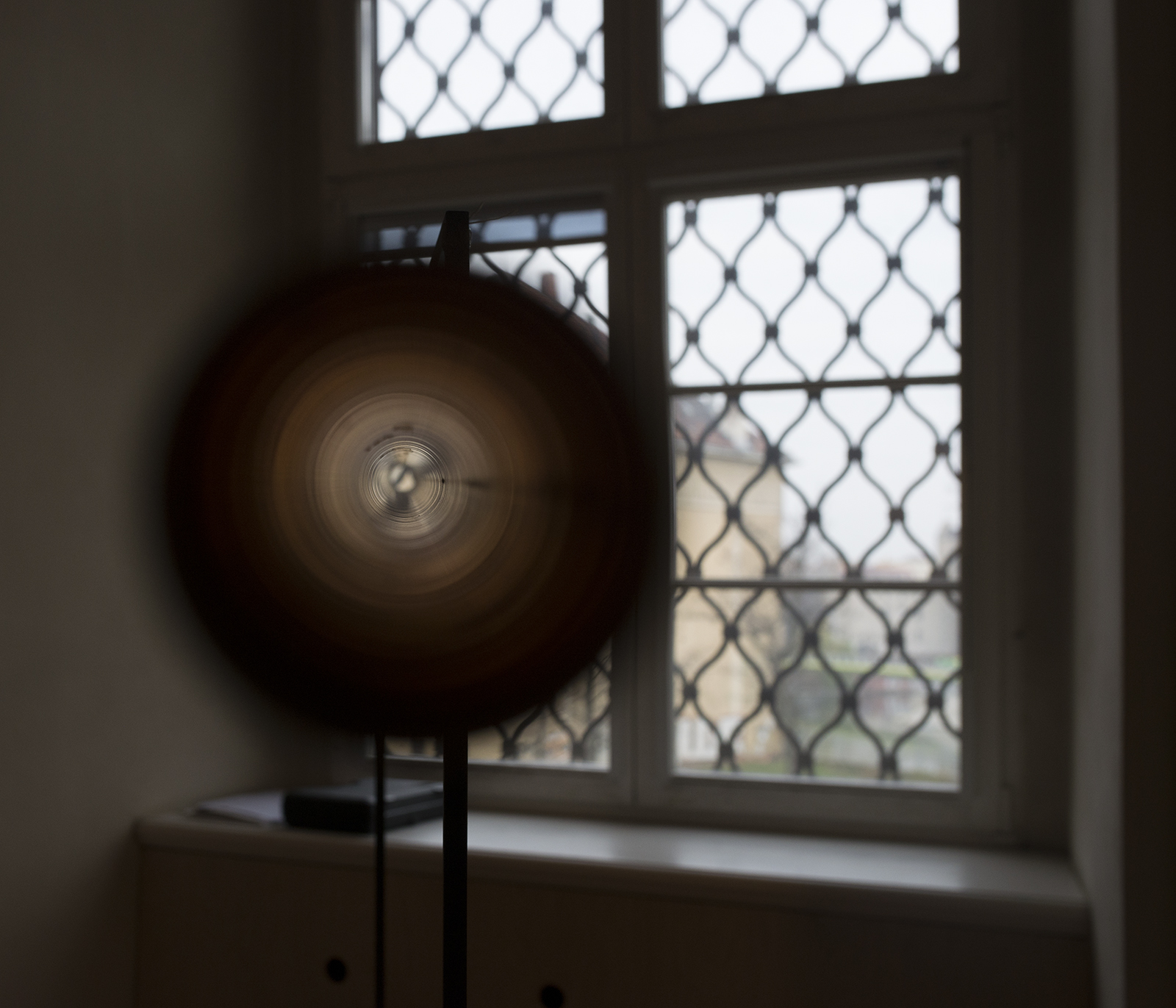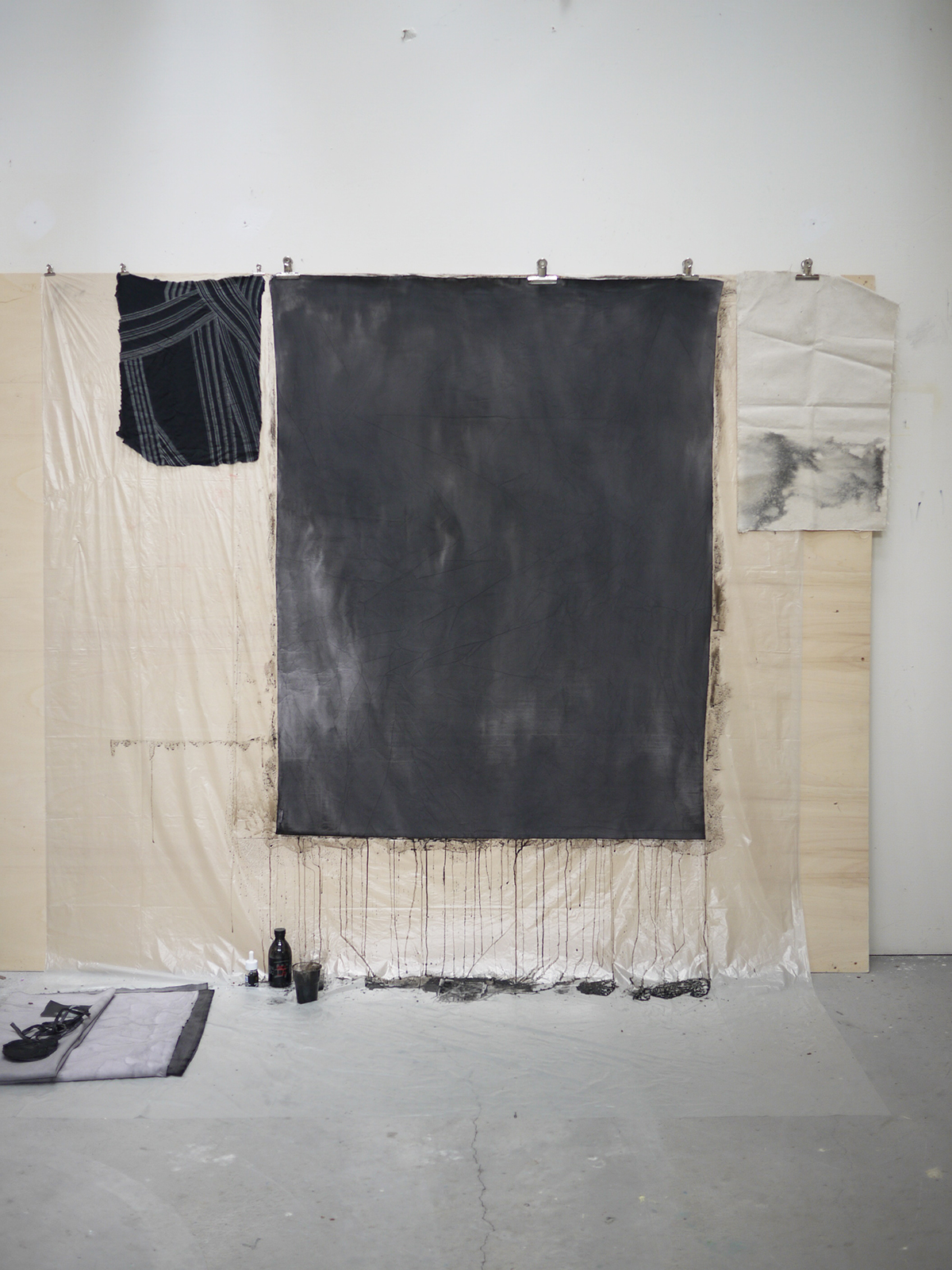ROUGH SKETCH
arrangement in Ossoliński National Institute, Wrocław (PL)
built around the selected treasures of the outstanding collection of Institute’s library
curator: Katarzyna Roj
Wrocław Drawing Triennial, 2015


Rough Sketch
mindmap of the arrangement with briefly described context of each artwork and book
pencil on the wall, various dimensions, 2015
Nicolaus Copernicus De revolutionibus orbium coelestium libri VI.
Nürnberg, Johann Petreius, 1543. 2°
from the National Ossoliński Institut collection

Jan Hevelius Machinae coelestis pars prior oranographiam sive
instrumentorum astronomicorum... descriptionem... exhibens..
Danzig, print. author Simon Reiniger, 1673. 2°
from the National Ossoliński Institut collection

general view of the arrangement

cabinet arranged for the treasure books
Faresight (according to Jan Hevelius perfect sight)
brass pipe, steel
250 x 130 x 20 cm, 2015
Jan Hevelius crafted many lenses commisioned by other european astronomers for their instruments. Although himself, he never used any lenses in his telescope. Apart from possessing a physically perfect sight, he claimed that because the man was created in the image and likeness of God, using any "prosthesis" would insult God. Faresight was made shortly after 2015 Polish
parliamentary election as the impulse of constant longing for secular state of the country.



Empire
inkjet archival print
100 x 140 cm, 2015
(nature vs culture)
brass bar, laurel twig (same diameter as bar), inkjet archival print
various dimensions, 2015




⟵Moon Stone
collage on black foil, tape
~21 x 36 cm, 2015
Heart of Darkness
polish linen, chinese ink
100 x 140 cm, 2015


